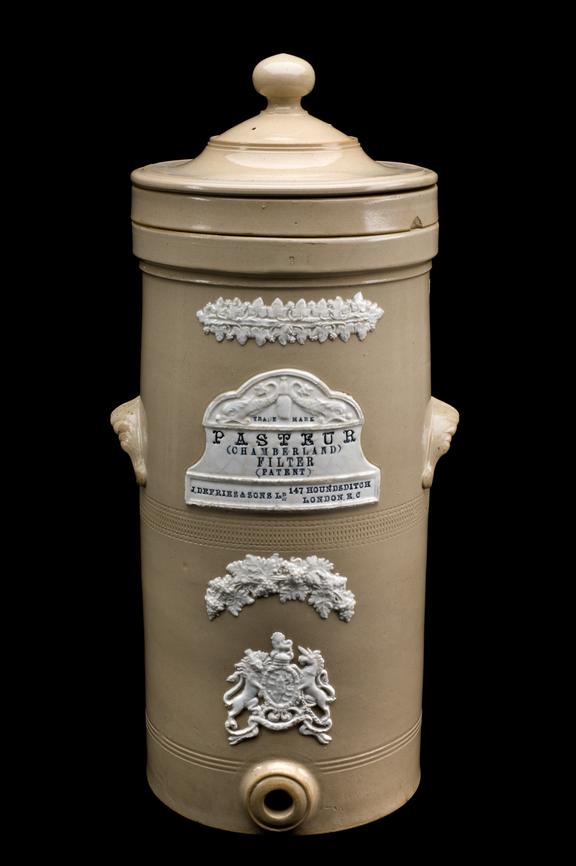


Water filter, stoneware, Pasteur-Chamberland design, by J.G. Defries & Sons of London, c. 1900
This type of filter was invented in 1884 by Charles Chamberland (1851-1908), a French bacteriologist who worked with Louis Pasteur (1822-1895). He developed a porcelain filter that could be used to remove micro-organisms from pressurised water. Not only was it useful for sterilising techniques in the laboratory, it also filtered and purified water for drinking.
Pasteur later modified the filter, which is why the design carries his name too. Filtering water was and is important as a number of diseases, such as cholera, can be transmitted by contaminated water .
Details
- Category:
- Public Health & Hygiene
- Collection:
- Sir Henry Wellcome's Museum Collection
- Object Number:
- A631491
- Materials:
- stoneware and incomplete
- Measurements:
-
overall: 606 mm x 260 mm 225 mm,
depth: 240mm
height: 625mm
width: 260mm
- type:
- water filter
- credit:
- Clarke, A.L.




